
Hex Mayflies
Hexagenia limbata
The famous nocturnal Hex hatch of the Midwest (and a few other lucky locations) stirs to the surface mythically large brown trout that only touch streamers for the rest of the year.
Featured on the forum

I caught this tiny larva without a case, but it seems to key pretty clearly to to Glossosomatidae. From there, the lack of sclerites on the mesonotum points to either Glossosoma or Anagapetus. Although it's difficult to see in a 2D image from the microscope, it's pretty clear in the live 3D view that the pronotum is only excised about 1/3 of its length to accommodate the forecoxa, not 2/3, which points to Glossosoma at Couplet 5 of the Key to Genera of Glossosomatidae Larvae.

Troutnut is a project started in 2003 by salmonid ecologist Jason "Troutnut" Neuswanger to help anglers and
fly tyers unabashedly embrace the entomological side of the sport. Learn more about Troutnut or
support the project for an enhanced experience here.
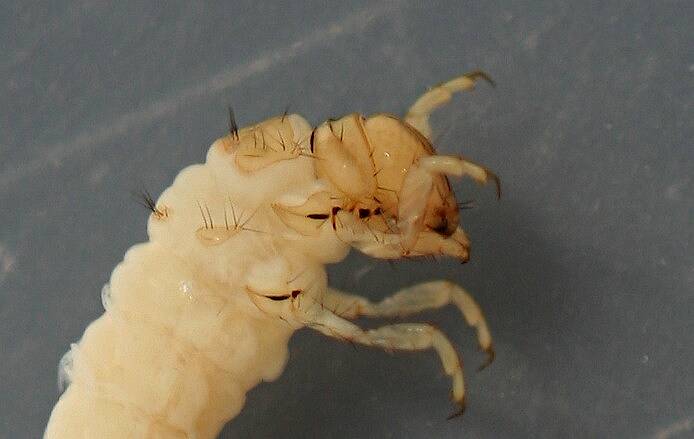
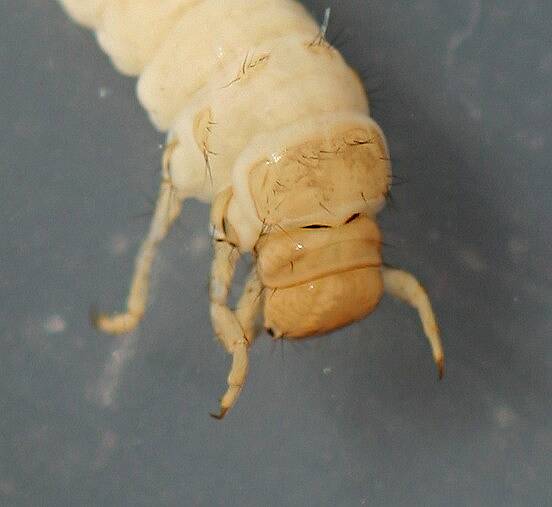
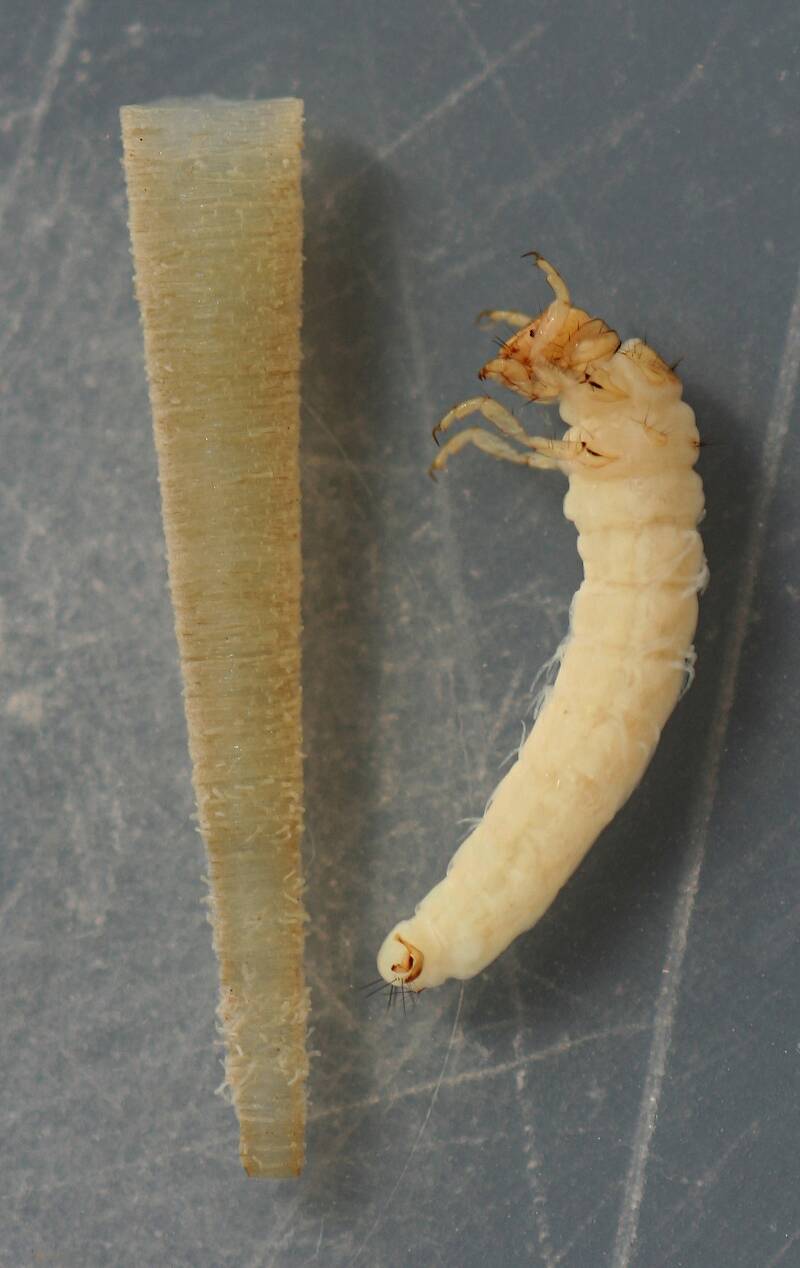
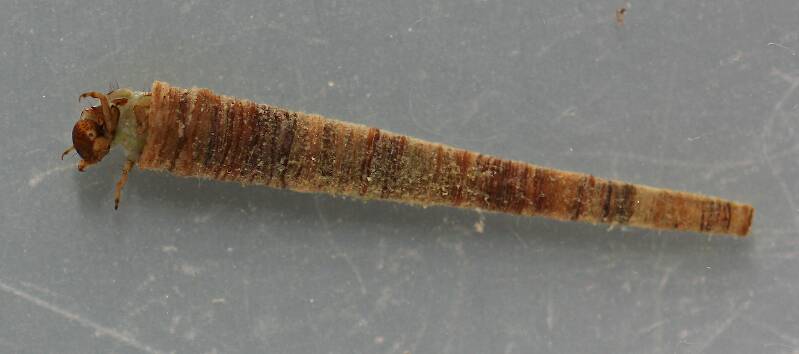
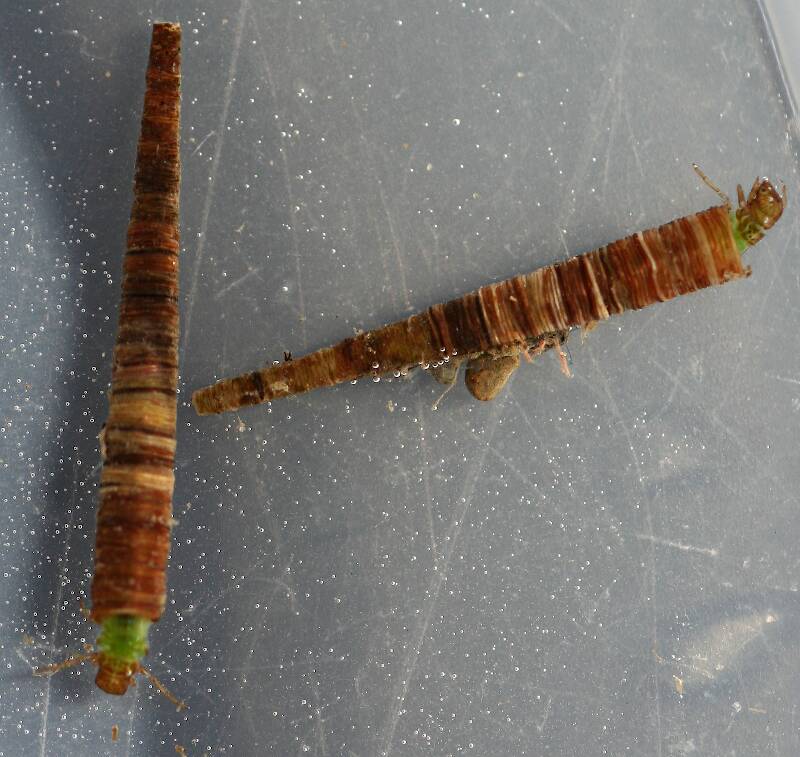
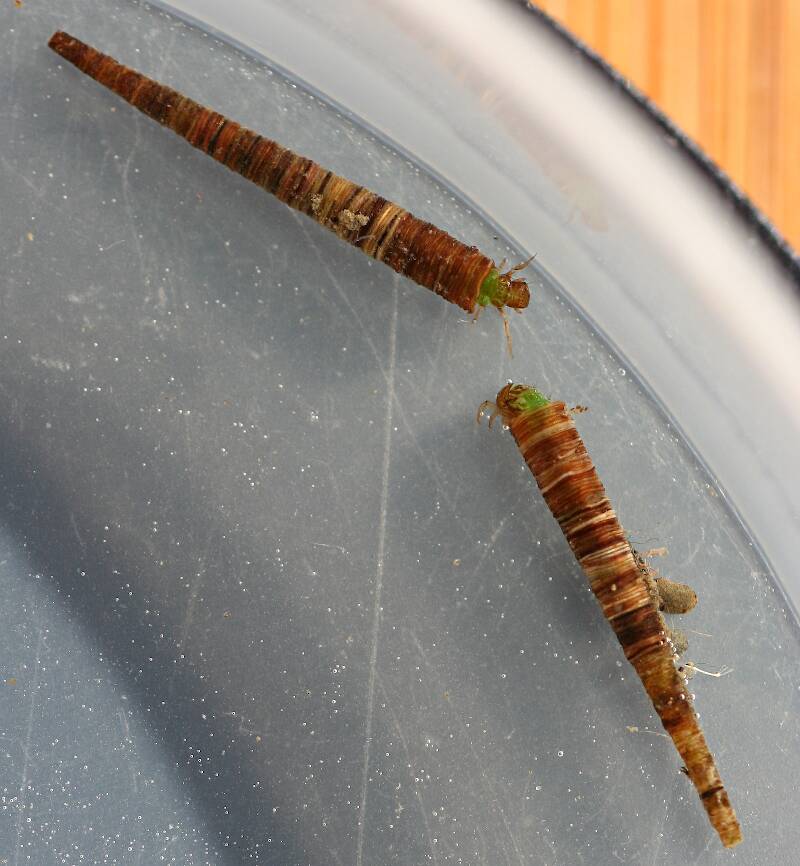
Millcreek on Mar 6, 2015March 6th, 2015, 6:08 am EST
These are common in the Russian River and Mill Creek. They're usually
present from February through June. These were keyed out using Merritt, Cummins and Berg (2008).
The first few pictures were taken of specimens preserved in alcohol and they have lost most of their color. The pictures were taken to show some of the features which separate them from Brachycentrus and Micrasema spp.
Cases are approximately 15 mm long and larvae about 10 mm long. They're usually found on torrent sedge or algae laden rocks.
present from February through June. These were keyed out using Merritt, Cummins and Berg (2008).
The first few pictures were taken of specimens preserved in alcohol and they have lost most of their color. The pictures were taken to show some of the features which separate them from Brachycentrus and Micrasema spp.
Cases are approximately 15 mm long and larvae about 10 mm long. They're usually found on torrent sedge or algae laden rocks.
"If we knew what it was we were doing, it would not be called research, would it?"
-Albert Einstein
-Albert Einstein
Martinlf on Mar 6, 2015March 6th, 2015, 7:12 am EST
features which separate them from Brachycentrus and Micrasema spp.
Mark, could you elaborate, specifying those features? Also thanks again for the photos. Stunning.
"He spread them a yard and a half. 'And every one that got away is this big.'"
--Fred Chappell
--Fred Chappell
Millcreek on Mar 6, 2015March 6th, 2015, 8:51 am EST
Mark, could you elaborate, specifying those features?
Brachycentrus would have different legs, with a longer femora and a tibia with a prominent spur.
Micrasema would have the pronotal groove curving anteriorly, with the ends of the groove usually meeting the anterior margin.
Amiocentrus would have a shorter femora, a tibia without a prominent spur,
the ends of the pronotal groove not meeting the anterior margin and a mesonotal sa1 with a solitary setae on each side.
"If we knew what it was we were doing, it would not be called research, would it?"
-Albert Einstein
-Albert Einstein
Crepuscular on Mar 7, 2015March 7th, 2015, 2:09 am EST
Nice post Mark! I see a fair number of Micrasema here in PA. I love seeing your western bugs!
Gutcutter on Mar 7, 2015March 7th, 2015, 4:48 am EST
Way cool! Great photos, as usual, Mark
All men who fish may in turn be divided into two parts: those who fish for trout and those who don't. Trout fishermen are a race apart: they are a dedicated crew- indolent, improvident, and quietly mad.
-Robert Traver, Trout Madness
-Robert Traver, Trout Madness
Millcreek on Mar 7, 2015March 7th, 2015, 5:10 am EST
Eric and Gutcutter-
Thanks, glad you enjoyed them.
Thanks, glad you enjoyed them.
"If we knew what it was we were doing, it would not be called research, would it?"
-Albert Einstein
-Albert Einstein
Quick Reply
Related Discussions
Topic
Replies
Last Reply
15
Jul 9, 2009
by Martinlf
by Martinlf
5
Jul 24, 2008
by GONZO
by GONZO
7
Dec 19, 2016
by Clark2016
by Clark2016
10
Dec 20, 2009
by LittleJ
by LittleJ




